“Capture The Atlas” Unveiled The Best Milky Way Photographs Of The Year
29th May 2024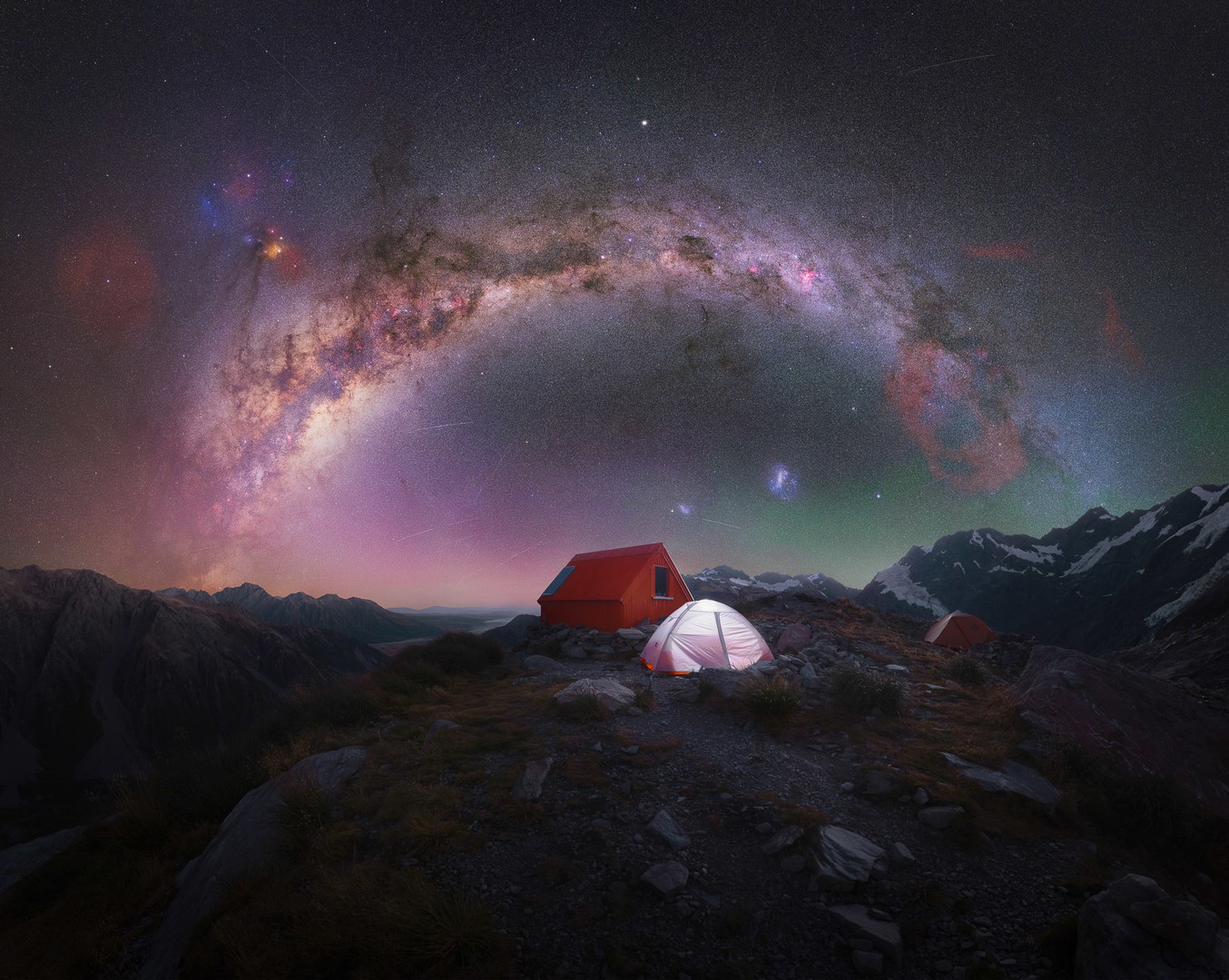
Taking photos of the celestial objects like the Milky Way is an exciting hobby. Today, there is a lot of equipment for both beginner photographers and experienced ones to photograph the smallest details of space. However, it’s the cook that makes the meal, not the pot. Owning a telescope is not enough to become an astrophotographer: you need passion, patience, and inspiration.
To help with the latter, Capture The Atlas has published a collection of the best Milky Way images taken around the world, the results of their seventh edition of their Milky Way Photographer of the Year. Here are the ones that we liked the most, so you can get inspired.
“The Lions Den” By Lorenzo Ranieri, Atacama Desert, Chile
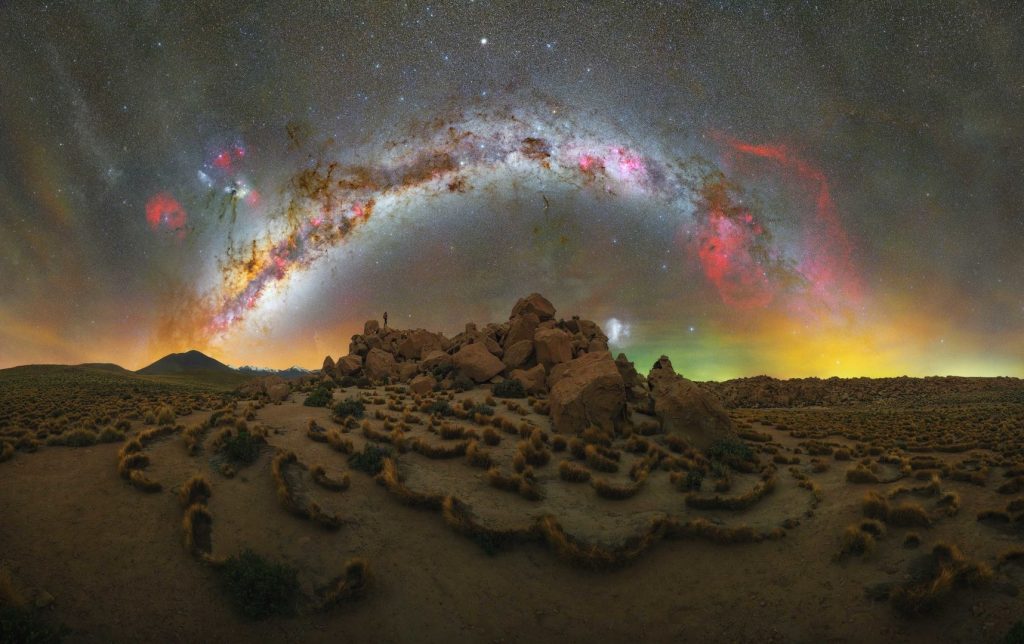
“This image was captured during an adventurous night on the plateau of the Atacama Desert, a potentially dangerous area due to its designation as a mountain lion reserve,” the author shares. “After a whole afternoon of searching for compositions, I stumbled upon this remarkable mass of rocks adorned with tufts of grass, now burnt by the harsh environment. The area was littered with bones of small animals and footprints of significant size, indicating the presence of wildlife not typically associated with peaceful sheep. Spending the night there was admittedly a bit nerve-wracking, but the opportunity to photograph such beauty made it worthwhile. The Milky Way’s arch, in all its splendour, rises above the pristine landscape, creating a truly mesmerizing scene.”
“Atmospheric Fireworks” By Julien Looten In Dordogne, France
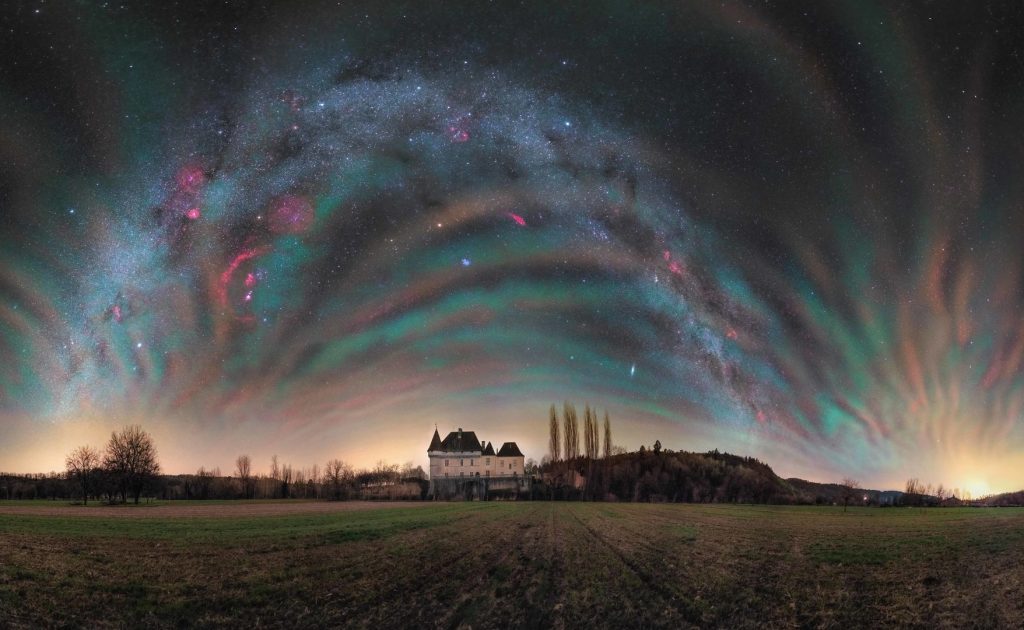
“Last winter, I ventured to the foot of a medieval castle in France to capture the Milky Way’s “winter” arc. Alongside the stunning celestial vault, an exceptional airglow illuminated the sky, resembling multicoloured clouds. This natural phenomenon occurs due to a chemical reaction in the upper atmosphere, emitting faint light known as chemiluminescence,” the photographer explains. “The panoramic view spans 180°, showcasing the entire Milky Way arc. From left to right: Sirius and the constellation of Orion, Mars, the Pleiades, the California Nebula, Cassiopeia, the double cluster of Perseus, and the Andromeda galaxy. Capturing this image required a large panorama of 40 exposures, totalling nearly an hour of exposure time using my Canon 6D Astrodon and Sigma 28mm f/1.4 lens.”
“Desert Bloom” By Marcin Zajac, Goblin Valley State Park, Utah
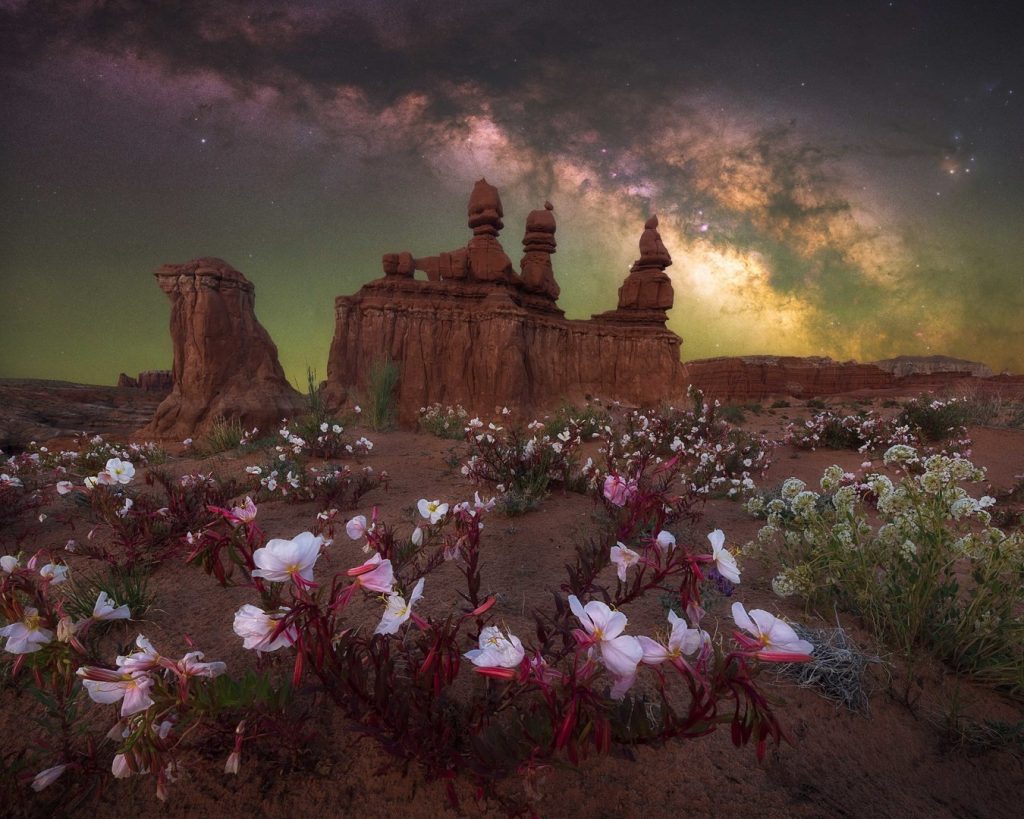
“Wildflowers blooming in front of a group of hoodoos called the Three Sisters in Goblin Valley State Park in Utah. The park, located in a remote corner of the Colorado Plateau and away from major urban centers, yields one of the darkest skies in the country,” the photographer commented on his work.
“Mungo Dreamtime” By John Rutter, Mungo National Park, NSW, Australia
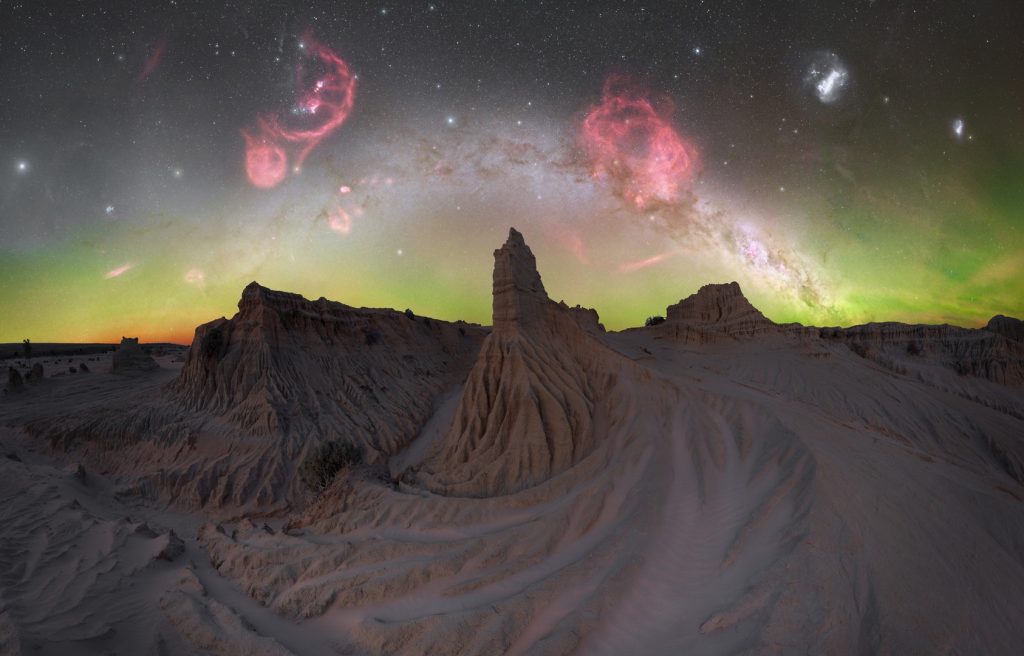
“This Mars-like landscape is the shores of Ancient Lake Mungo, housing the oldest human remains outside Africa—a significant site for all humankind. Its remote location grants it a Bortle 1 sky, allowing you to stand where the first Australians once did and gaze at the same sky they beheld 100,000 years ago. The beauty of the arid, wind-carved landscape and the untouched sky is only eclipsed by the rich history of this area,” the image is captured.
“A Clear Welcome” – Francesco Dall’Olmo, Laguna de los Tres, Patagonia, Argentina
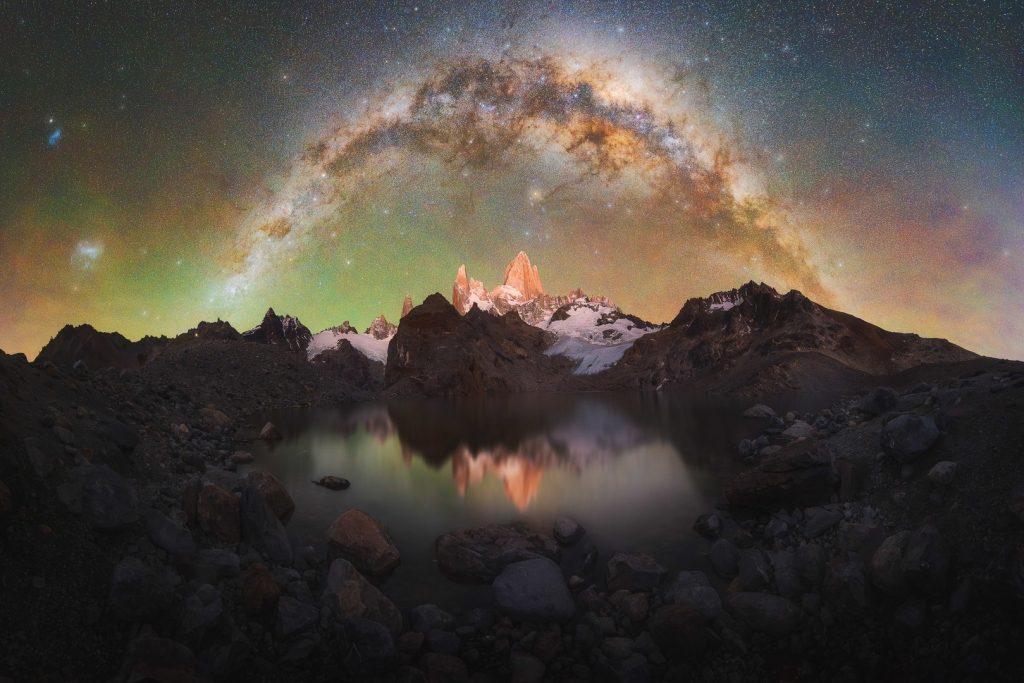
“This was the first photo I took in Patagonia,” says the author. “Contrary to expectations of cold, rain, and wind, our initial encounter with these landscapes was unusual: nearly three days of clear skies. Reaching the lagoon around 7 a.m., I immediately captured shots of the sky. Shortly afterwards, I photographed the foreground, where twilight had already set in. This clear welcome gifted me with a rare photo of Fitz Roy framed by the Milky Way arch.”
“Starry Hoodoo Wonderland” By Stephanie Thi, Kanab, Utah, USA
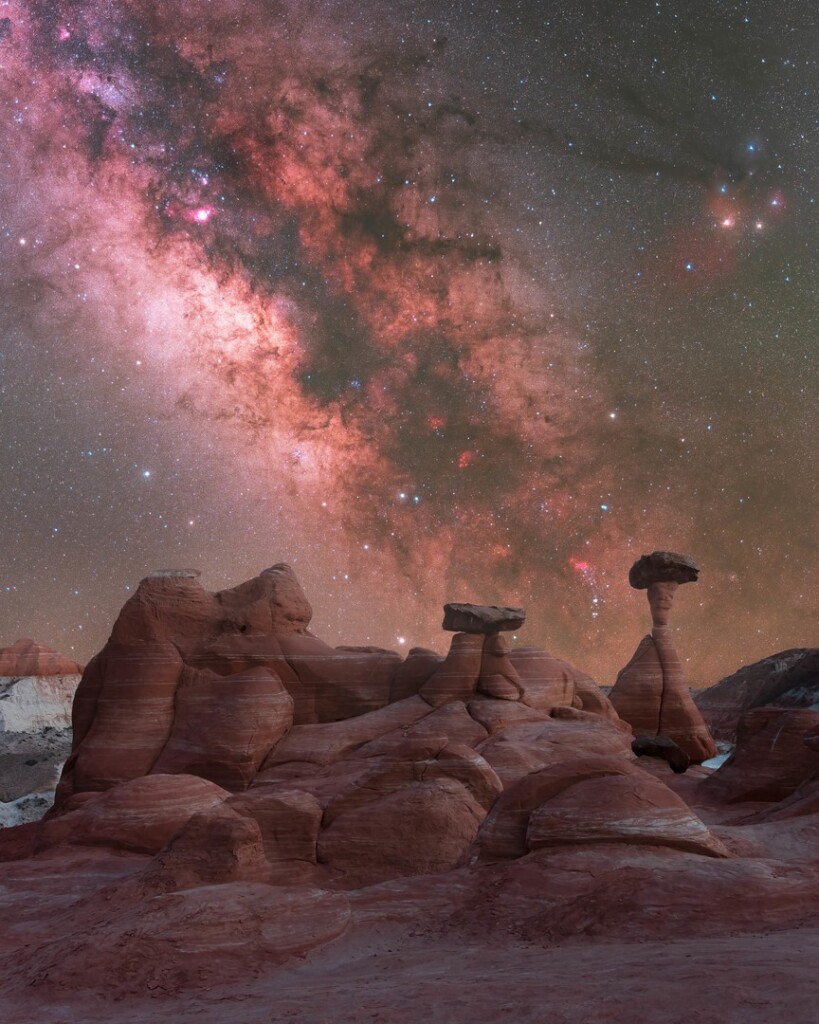
“This photograph represents the camaraderie within the night photography community. During the Nightscaper Photo Conference in Kanab, Utah, I had the opportunity to meet fellow photographers, many for the first time, and reconnect with others from afar. In this group, I found my people—those passionate about photography, star therapy, astronomy, and the beauty of dark skies,” says the author.
“Many of these individuals have become friends. Additionally, this trip marked my first encounter with hoodoos. Visiting the Toadstool Hoodoos with a group, I focused on enjoying the experience and fellowship rather than solely capturing the perfect shot.
However, I returned the following night to capture a blue hour foreground shot, aiming to replicate the scene from the previous night. Sharing this photograph and being recognized among such talented photographers is a privilege.”
“Starlight Therapy” By Kavan Chay, Aoraki/Mt Cook National Park, New Zealand
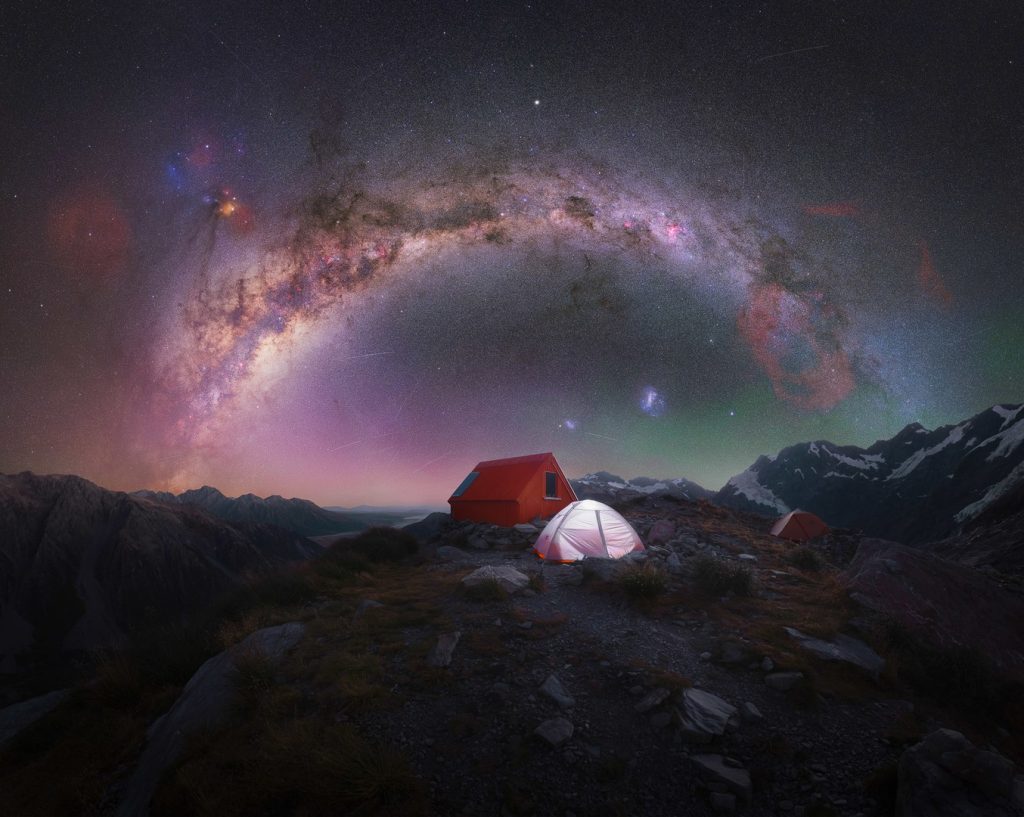
“The Aoraki/Mt Cook National Park has always brought joy and interesting stories, regardless of when I visit. This occasion was no exception. My mental health was low due to some rough times, and I lacked the motivation to attempt this climb. However, I knew it was essential to kick-start my recovery”, the photographer has written.
“The ascent was a struggle with 20-25kg of gear, but I managed a respectable time and enjoyed some daylight views. The night under the stars was breathtaking. Perfect nights like this make you appreciate the opportunity to witness it all. As the sun rose, tents lit up, and people stirred. A resident kea decided 5 a.m. was a good time to harass a few people, which is when I captured the foreground panorama.”
“Rainbow Valley” By Baillie Farley, Rainbow Valley Conservation Reserve, Northern Territory – Australia
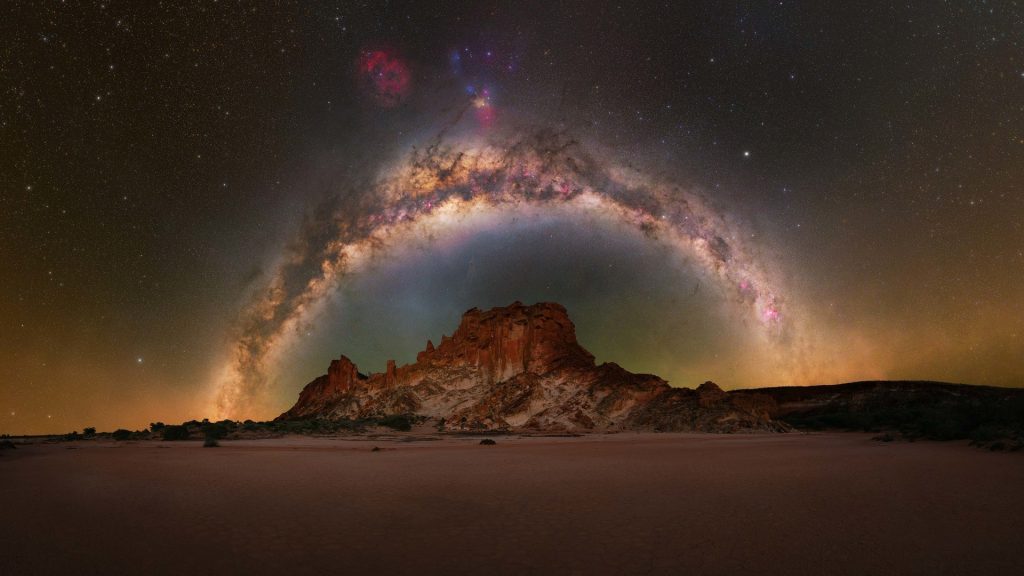
“My recent journey to the Central Australian Outback was an incredible experience, exposing me to the harsh vastness of the outback and some of the darkest southern night skies in the world,” says the photographer. “This image captures the breathtaking scene at Rainbow Valley Conservation Reserve, where the southern Milky Way gracefully spans above a remarkable formation of colourful sandstone rocks. This area exudes a unique charm, with its vibrant hues and stunning geological formations creating a mesmerizing landscape.”
“Multicolored up and down!” By Cari Letelier, Rainbow Valley, Atacama desert, Chile
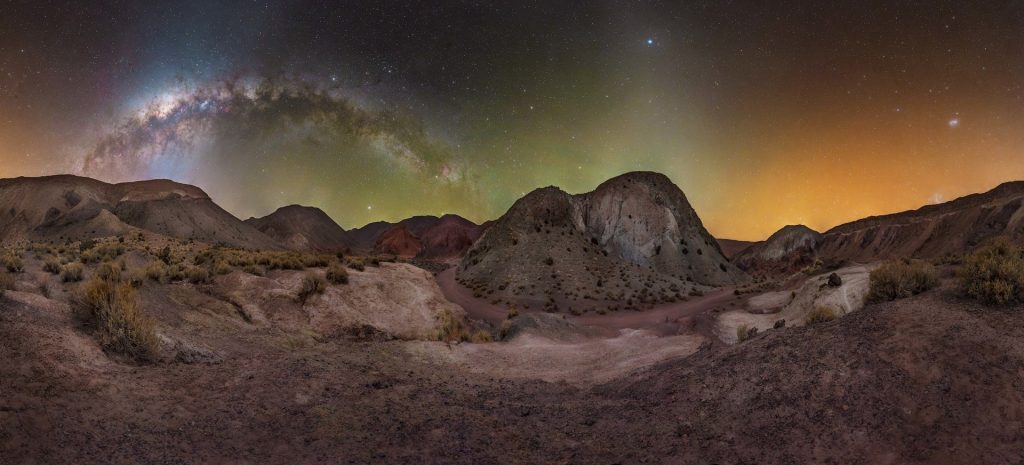
“Let me introduce you to Rainbow Valley, reminiscent of Mordor in some areas, nestled nearly 3200 meters above sea level in the Atacama Desert within the Domeyko mountain range,” the photographer has written.
“Under a Bortle 1 night sky, late October offers a breathtakingly wide view of the sky vault, with zodiacal light and gegenschein joined by intense airglow. The valley boasts a unique geological makeup: a base of ochre-red clay, a strip of chalky white salt, and a topping of moss-colored volcanic tuff, showcasing a rich mineral heritage.
That night, silence prevailed, allowing us to see our shadows illuminated solely by the stars’ brightness. To capture this scene, I created a 360°x90° panorama with 65 frames using an Astro-modified camera and a panoramic head.”
“Milky Way at Morning Glory Pool” By Jerry Zhang, Yellowstone National Park, USA
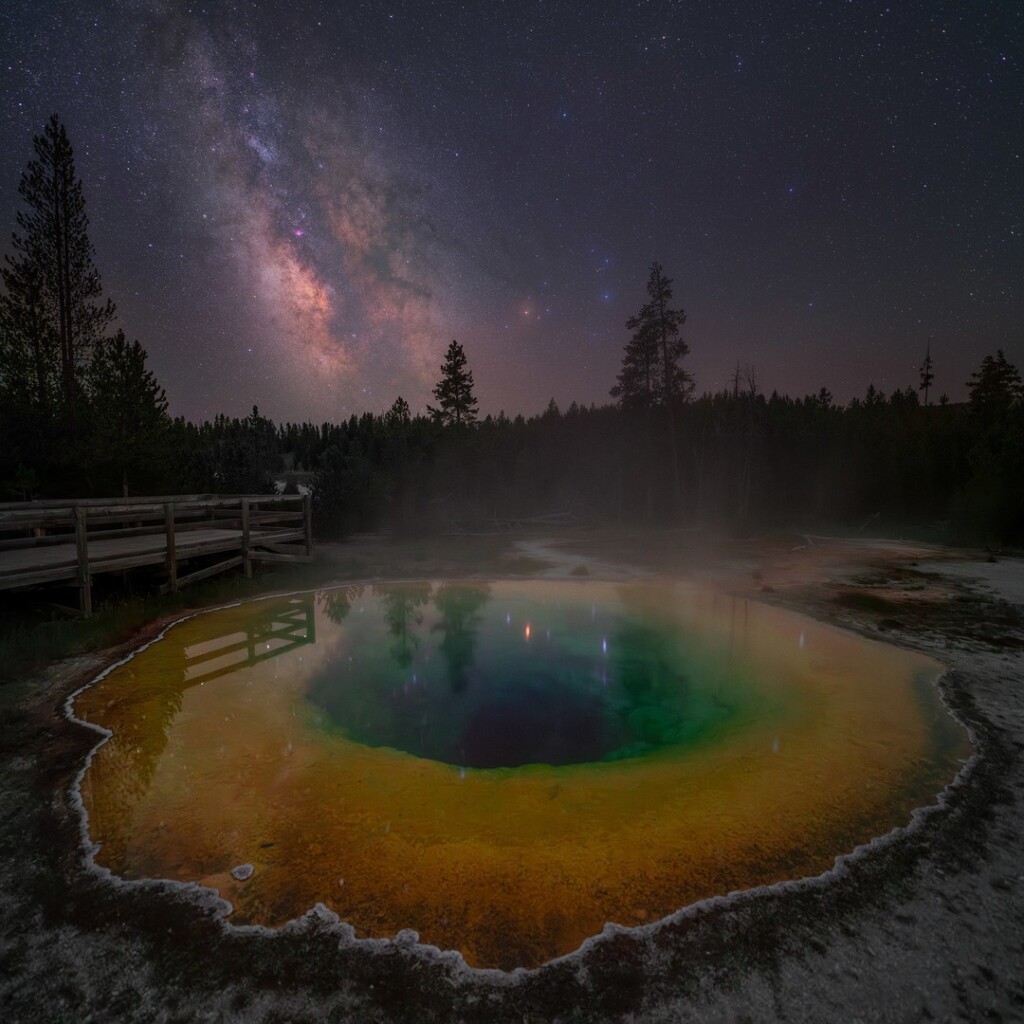
“Morning Glory is a renowned hot spring within Yellowstone National Park, shaped by hydrothermal features that foster vibrant habitats for microscopic organisms. Originally azure blue like the famous Grand Prismatic Spring, human interference and pollution have turned its waters a striking green. Unlike other springs, Morning Glory remains calm, enabling the reflection of starlight at night,” says the author.
“In this photo, the pool mirrors Scorpius, notably Antares, against a clear dark sky and brilliant Milky Way. The high elevation and minimal light pollution enhance the celestial spectacle. On a warm summer night, I finished this photo with one hand, and with the other hand tightly gripping bear spray! But despite the fear of wildlife, it was a very enjoyable night spent alone with the stars all around.”
To witness the full collection “The 2024 Milky Way Photographer Of The Year” visit https://capturetheatlas.com/

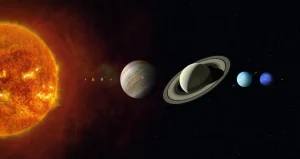




Thank you for your comment! It will be visible on the site after moderation.